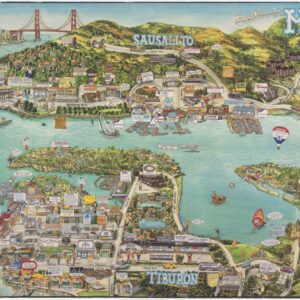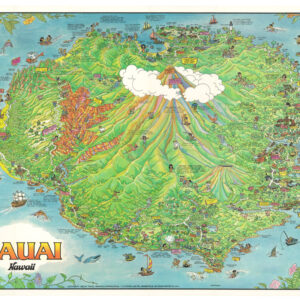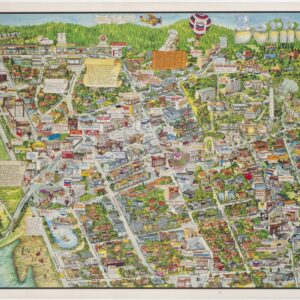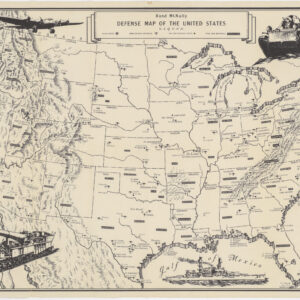Original run example of Saul Steinberger’s iconic illustration of the world as seen from a typical New Yorker’s perspective.
View of the World from 9th Avenue
Out of stock
Description
This famous illustration was created by illustrator Saul Steinberg for the March 29, 1976 cover of the magazine The New Yorker. It has since become an iconic image that in a tongue-in-cheek fashion depicts the hierarchical lens through which the stereotypical New Yorker views the world. Yet despite its New York-centric concept, the idea is essentially universal, which is one of many reasons why this work has won such international renown. The psychology of the image suggests that it is that which is close, familiar, and relevant that concerns us the most, whereas even consequential issues remain peripheral as long they remain far away. In this case, it is as if the whole world is reduced to a series of Manhattan suburbs.
The image is essentially divided into two sections: Manhattan, and that which lays outside it. The Manhattan part depicts 9th and 10th Avenue, as well as a raised 12th Avenue along the Hudson River. The image essentially degrades in quality and detail as one moves away from the viewer’s position, so that the buildings, cars, and people on 9th Avenue stand out much clearer than those on 10th. The streets are filled with cars, trucks, and pedestrians. Beyond Manhattan and the Hudson, there is a thin brown strip labelled Jersey, after which a green swathe constitutes the rest of the country.
The green swathe takes up less space in the image than the three or four blocks shown at the forefront. Within the green swathe we find a few toponyms, some of which are enhanced by semi-pictorial forms. Place names include the five great cities of Chicago, Los Angeles, Washington D.C., Las Vegas, and Kansas City, as well as the three states of Texas, Nebraska, and Utah. Along the fringes of the green swathe we find Canada in a soft and unassuming yellow, and Mexico in an alerting red. Beyond that, the Pacific Ocean looms, even though it visually only takes up little more space in the image than the Hudson River does. And then, in the furthest horizon, three small elevations demarcate China, Japan, and Russia.
Even though the image obviously is a caricature, it applies some rather symbolic elements in its composition. Our nation’s capital, for example, is depicted as a remote location near the Mexican border. The brown strip representing Jersey on the other hand, not only fills the entire length of the country (and image), but is set in a markedly bolder font than the rest of the country’s place names. Another interesting feature is the westward perspective. America was in many ways created by always looking west, but here it implies something else as well. Drawn at the height of the Cold War, the image shows an obvious awareness of the global ideological tension by explicitly including both the communist powers of the Soviet Union (Russia) and China. The perspective nevertheless also means that America’s back is turned on Europe.
The original drawing was executed in black ink, color pencil, and watercolor, and measured 28 by 19 inches (71 cm × 48 cm). This original vintage print of the drawing measures 12.7 x 17.7 inches (32 x 45 cm) and was issued shortly after The New Yorker applied for a patent on the drawing, recognizing its iconic expression. Copyright was reallocated to the illustrator Saul Steinberg, who had worked as an artist for The New Yorker for several years.
Cartographer(s):
Saul Steinberg created 85 covers and 642 internal drawings and illustrations for The New Yorker. His most famous was undoubtedly the March 29, 1976, cover, entitled “A View of the World from 9th Avenue”.
Condition Description
Excellent; on archival poster linen.
References



